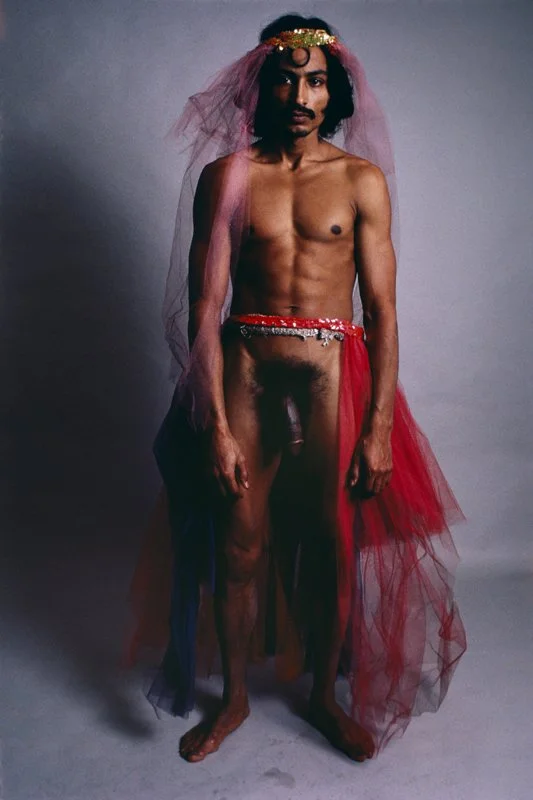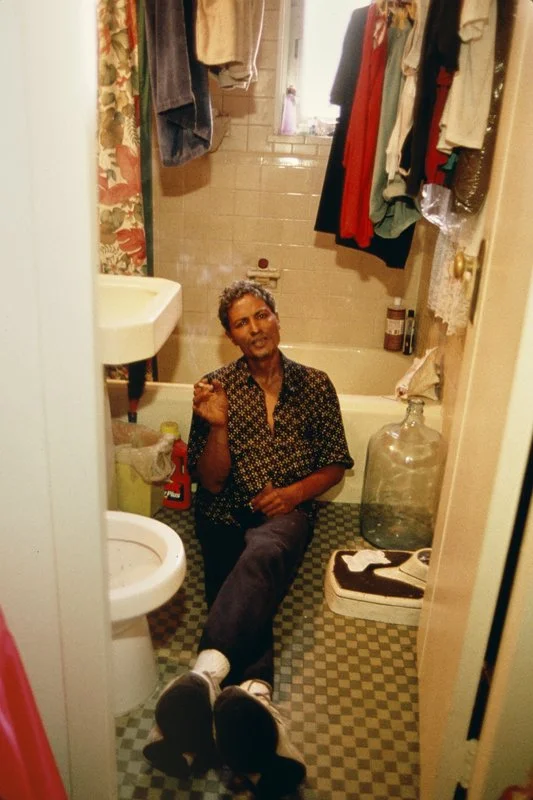Exhibition Review: Arlene Gottfried: Midnight
Arlene Gottfield ©
Written by Katie Grierson
Copy Edited by Hillary Mitchell
In 1984, Arlene Gottfield first met Midnight, whom the exhibition is named after, at a club on the Lower East Side. He invited her to see him dance the next day, and on that summer night, a strong bond was formed that Gottfield would continue to document for two decades. Hundreds of photos were taken during this time, showing Midnight through his close friend’s gaze.
Arlene Gottfield ©
Gottfield’s Midnight series is overwhelmingly intimate, containing 22 color prints and 10 black and white prints shot between 1984 and 2002. Displayed in chronological order, we are first introduced to Midnight as Gottfield would have seen him–fun-loving, handsome, gentle. Gottfield was seemingly enchanted by Midnight upon first meeting him. Gottfield says in a statement about the work “Midnight had so many colorful stories to tell for such a young person.”
Arlene Gottfield ©
Midnight, his real name Ismael, had been only thirteen when he ran away from home and worked on the streets, traveling often by bus across America. Speaking to Time Magazine this year, Midnight talks about the series and the book of the same title that was published in 2003: “She didn’t want me to pose for any pictures. Just stay natural…I was always trying to look tough.”
Arlene Gottfield ©
But as the photographs continue, the complex nature of their relationship becomes more visible: this is a man who Gottfield loved, who she would sacrifice her days for to sit in the Social Security with, who she went to Central Park with, and who even moved in with her, but who also scared her. As Gottfield and Midnight grew closer, Midnight became more enigmatic–he would disappear into himself for days, and would frighten Gottfield. She described Midnight’s actions as a cycle, becoming sick, getting imprisoned or hospitalized, and then medicating and receiving help. It wouldn’t be until later that Gottfield would learn that Midnight struggled with schizophrenia.
Arlene Gottfield ©
Gottfield writes, “Getting…help seemed to work for a while; then something would go wrong and the voices would start telling him to jump on a bus to California, the Midwest, or anywhere and everywhere a bus could take him. Then…he would do something drastic, like the time he set his hand on fire and wandered for miles without food or shelter until someone finally called the police and he was taken away in an ambulance. Then it would start all over again.” The deepness of their connection is undeniable, as well as the difficulties. In some photos, Midnight is faraway, unfocused, seemingly unaware of the camera.
Arlene Gottfield ©
Both the series and book acts as a journal of Midnight’s life with Gottfield, showing the highs and lows as he grapples with his mental health. But it also speaks to something deeply human–loving someone unconditionally. These photographs weren’t taken with the intention of crafting them into a project–they were simply photos Gottfield took of her friend, a gentle soul with a hard life. Soft and real, the series makes us wonder what it means to love someone who suffers for that long. To watch them change, for better or worse. To cherish them despite everything.
Arlene Gottfield ©
Looking at the work now, after Gottfield’s passing in 2017, Midnight states, “It’s just half of a lifetime here.”
Midnight is on view at Daniel Cooney Fine Art from January 20 to March 5, 2022.
Photo Edited by Lenin Arache













